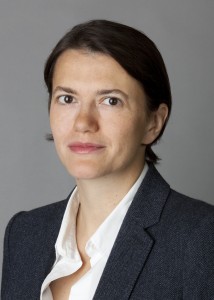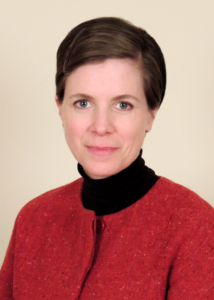 Evolving digital technology demands more communication and accessibility from all employees, which leads to a culture of multi-tasking. But as leaders face increased communication demands, it’s important that they retain the value of listening.
Evolving digital technology demands more communication and accessibility from all employees, which leads to a culture of multi-tasking. But as leaders face increased communication demands, it’s important that they retain the value of listening.
Listening is Getting More Difficult
Active listening has been identified as one of the ten attributes of embodied leadership. Effective listening by leaders has been noted as the first step in creating trust within organizations. Also research shows that supervisor listening contributes to employee job satisfaction, satisfaction with the supervisor, and fosters a strong and beneficial exchange between leaders and team members.
Yet according to Accenture’s #ListenLearnLead study of 3,600 business professionals across 30 countries, the vast majority of professionals (64%) feel that listening has become more difficult in today’s workplace.
While nearly all (96%) of global professionals judged themselves to be “good listeners”, nearly all (98%) also report multi-tasking at least part of the day.
The study found that eight in ten respondents said they multi-task on conference calls with work emails (66%), instant messaging (35%), personal emails (34%), social media (22%) and reading news and entertainment (21%). In fact, professionals report distracted listening and divided attention unless they are held directly and visibly responsible within the context of the meeting.
“Digital is changing everything, including the ways in which we communicate. In turn, the way we communicate is changing how we listen, learn and lead in the workplace,” says Nellie Berroro, Managing Director, Global Inclusion & Diversity at Accenture. “Today, truly listening means not just watching our nonverbal cues in face-to-face meetings, but also maintaining our focus on conference calls, staying present, and resisting the urge to multi-task with instant messages and texts.”
Multi-Tasking Means More Quantity, But Less Quality
The attraction to multi-tasking seems to be a double-edged sword in the workplace that pins quantity against quality.
In Accenture’s study, 64% of Millennials, 54% of Gen Xers, and 49% of Baby Boomers reported multi-tasking during at least half of their work day. While 66% of professionals agreed multi-tasking enables them to get more done at work, 36% report that distractions prevent them from doing their best work. Millennials were at the extreme on each – feeling multi-tasking meant getting more done (73%) and yet distractions prevented them from doing their best work (41%).
However it’s traditional interruptions imposed by others (telephone calls & unscheduled meetings & visitors) rather than technology that were reported as most disruptive, perhaps due to the lack of control over these distractions.
What suffers? The trade-offs reported include decreased focus, lower-quality work, and diminished team relationships. But can leaders afford these trade-offs, too?
Despite the Benefits, Are Leaders Too Accessible?
“Our survey found technology both helps and hinders effective leadership,” says Borrero. On the positive side, 58% of survey respondents saw technology as a benefit for leaders enabling them to communicate quickly with their teams, allowing both time and geographic flexibility (47%) as well as accessibility (46%).
However, 62% of women and 54% of men felt technology made leaders over-stretched by being too accessible. 50% of respondents felt it forced multi-tasking and 40% felt it distracted from culture and relationship building. 55% felt a top challenge for leaders is information overload.
Borrero recommends practicing discipline when needed in disengaging from other technologies to give full focus to the material in front of you, such as putting your mobile device on silent during phone conferences and actively noting key points. “When you face information overload,” she says, “become comfortable with turning off technology. For example, you might disconnect at night, so you can recharge, and decide not to look at your phone until the morning.”
Importantly, when it comes to effective leadership and overcoming barriers to it, focusing on quality of communication and connection matters most – and that may very well start with listening.
The most important leadership attributes identified by the study were the “soft skills” of effective communication (55%), ability to manage change (47%), and ability to inspire others and ideas (45%), closely followed by understanding team members.
Yet this is also where skills suffer: the two most commonly perceived obstacles to effective team leadership were a lack of interpersonal skills (50%) and a lack of communication skills (44%).
Getting Better At Listening
While digital technology brings many advantages, leaders who compromise at listening may compromise their ability to lead effectively.
A Westminster Business School report highlights, “Listening is an essential skill in all situations and it is particularly important for leaders and managers to actually hear what others say, not simply what we think we hear them say…All great leadership starts with listening. That means listening with an open mind, heart and will. It means listening to what is being said as well as what isn’t being said.”
Despite its importance to leadership, leaders are too often ineffective at truly listening according to an HBR article by Christine M. Riordan. She notes, “The ability and willingness to listen with empathy is often what sets a leader apart.”
Riordan outlines three key behaviors leaders can practice that are linked with empathetic listening:
1) Hearing with all of your senses and acknowledging what you’ve heard.
This means “recognizing all verbal and nonverbal cues, including tone, facial expressions, and other body language.” It’s as much about listening to what is not said as what is said, and probing a bit deeper, as well as acknowledging others feelings or viewpoints and the act of sharing them.
2) Processing what is being shared and heard.
This means “understanding the meaning of the messages and keeping track of the (key) points of the conversation.” Effective leaders are able to capture and remember global themes, key messages, and points of agreement and disagreement.
3) Responding to and encouraging communication.
This means “assuring others that listening has occurred and encouraging communication to continue.” Acknowledging others verbally or non-verbally, asking clarifying questions, or paraphrasing reflects consideration of their input. This can also mean following-up to ensure others know listening has occurred.
According to Accenture’s Borrero, “Leaders are role models employees emulate, so it’s important for them to set a good example. In our increasingly hyper-connected digital workplace, we all need to practice ‘active listening,’ including paraphrasing, taking notes and asking questions. At Accenture, we offer a number of courses in effective listening, which is critical to our company as we focus on serving clients.”
In today’s leadership context, where effective leadership means showing social awareness not just self-awareness, leaders may employ technology to help them do it, but one way or another, it’s important they find a way to truly listen.
By Aimee Hansen
 Client service and innovative deal making are what drive Sanja Udovicic, a partner in global law firm Shearman & Sterling’s project finance group in London. “My proudest professional achievements derive from successfully accomplishing my clients’ objectives and delivering their goals,” she says, particularly when working on what she describes as “complicated and interesting deals that haven’t been done before in frontier jurisdictions.”
Client service and innovative deal making are what drive Sanja Udovicic, a partner in global law firm Shearman & Sterling’s project finance group in London. “My proudest professional achievements derive from successfully accomplishing my clients’ objectives and delivering their goals,” she says, particularly when working on what she describes as “complicated and interesting deals that haven’t been done before in frontier jurisdictions.”




